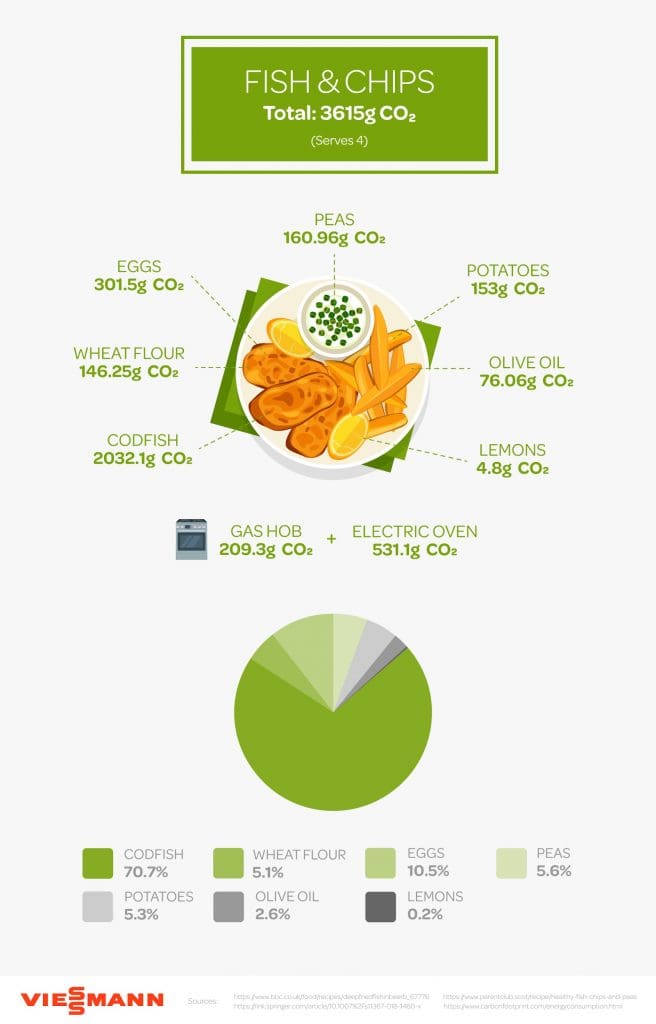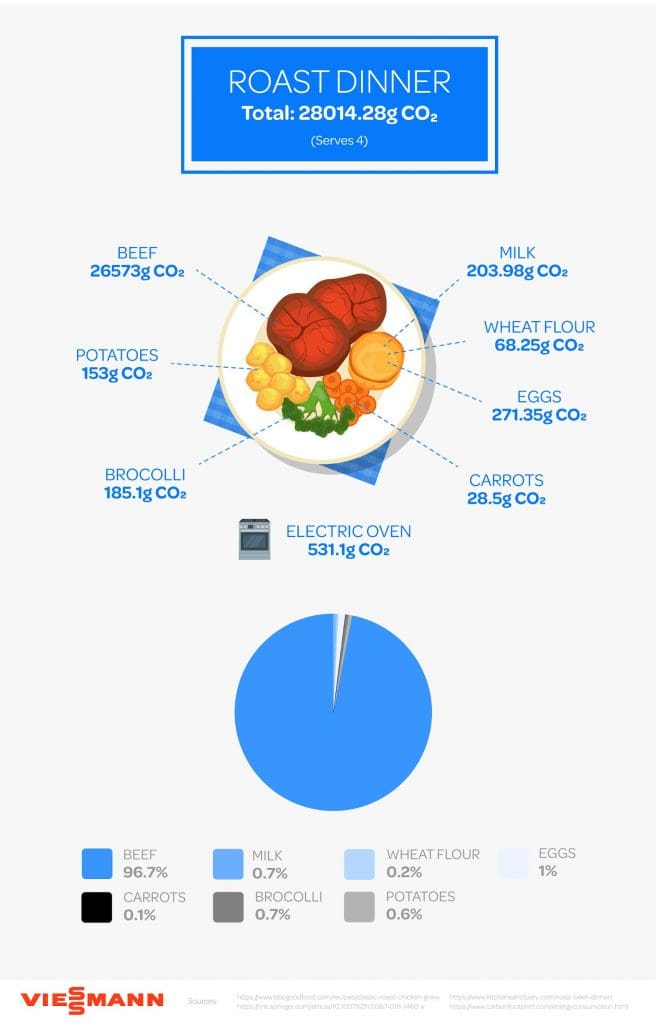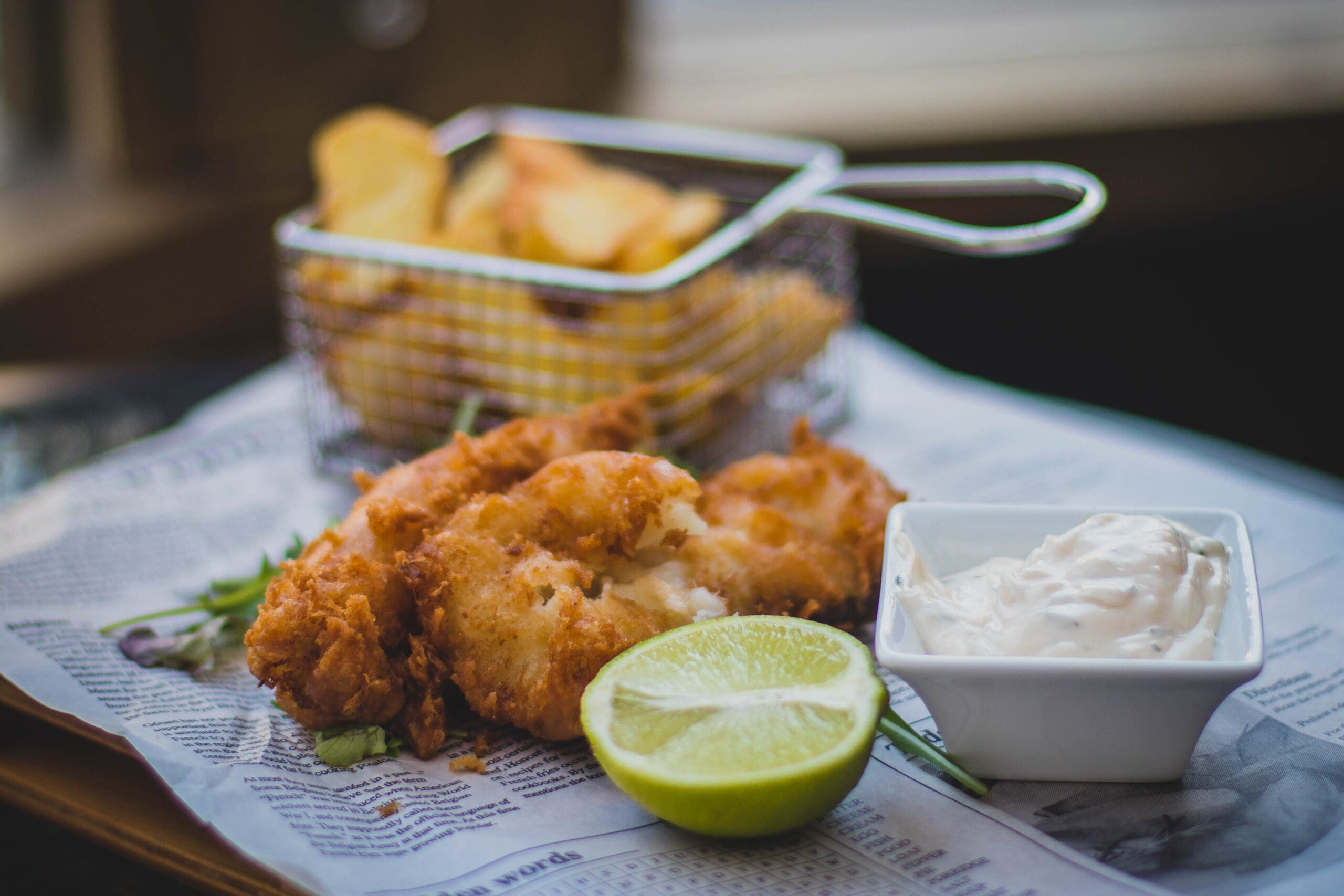Since lockdowns were enforced due to Covid-19, our favorite restaurants and cafes were forced to close until further notice. Due to this, people have had more time to get creative and expand their skills in the kitchen by trying out new recipes. Many of us are thinking more about what ingredients we use, such as switching to healthy alternatives. Have you ever wondered if Britain’s home cooking is eco friendly? Carbon labels can now be found on some food and drink manufacturers’ labels, to help educate its customers on the CO2e of what they are buying. From these carbon labels and the CO2e of cooking methods, Viessmann has created labels for some of Britain’s favorite home-cooked meals.
Fish and Chips
Found all over the UK and favorites in seaside town takeaways, fish and chips are one of our most loved dishes. Many of us have started re-creating the dish at home using simple ingredients while we’re unable to get to the takeaway.
The total CO2e produced in making a portion for 4 is 3,615.07g, which is the equivalent of an 18km car journey.

Roast Dinner
Britain’s most iconic Sunday meal, which has always been a home favorite, is the roast dinner. Although it is no surprise that red meat is one of the largest producing CO2 food groups, along with dairy due to the production.
The total CO2e of this dish, which feeds a family of 4 is 28,014.28g, the meat alone is 26,573g, which is a staggering amount compared to the vegetables included. To visualize, it would be a 140km car journey, a lot further than the emissions from fish and chips.

Carbon labels help us to visualize our carbon footprint further than just travel and daily activities. , which is important for us to be aware of. If you are wondering of ways you can reduce the carbon footprint of your meals, here are some tops tips to help:
- Reduce your intake of red meat and dairy products, as they have a longer production line, which creates more CO2. Some people find following a vegan diet one day per week to be a good idea.
- Plan your weekly shops. Avoid wasting food. It is estimated the average family throws away £700 of food each year.
- Try and find alternatives, such as swapping dairy milk to almond or oat milk, and swapping red meat to chicken or fish.
Conclusion
Making simple and small changes to day to day habits, such as the above can dramatically reduce yours and your family’s carbon footprint. Looking also at how we can adapt our daily routines to reduce unnecessary energy consumption within household activities. Such as turning off taps when not in use, only running the washing machine with a full load, and turning off lights when leaving empty rooms. Although these are small factors, added up they can lead to a larger carbon footprint which is easily forgotten. Another way of decreasing your footprint is by reducing vehicle use. Try taking public transport, cycling or walking where possible rather than driving. By following steps like the above you’ll be more energy aware and also save money!





